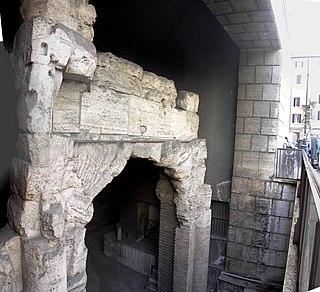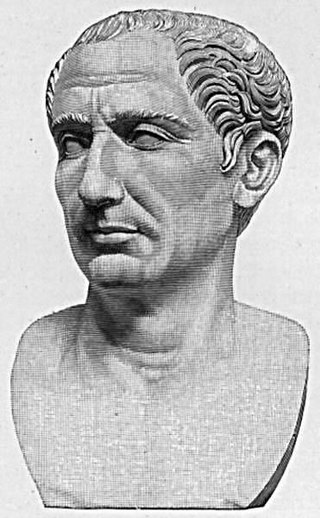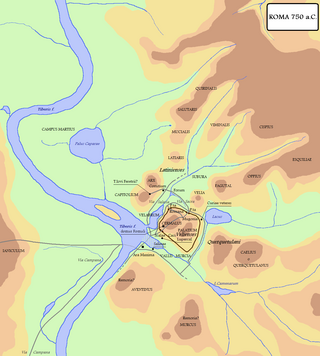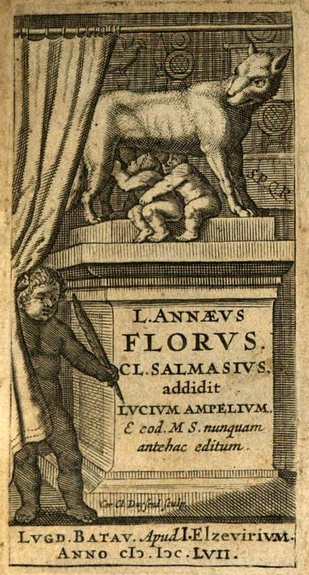Related Research Articles

Polybius was a Greek historian of the middle Hellenistic period. He is noted for his work The Histories, a universal history documenting the rise of Rome in the Mediterranean in the third and second centuries BC. It covered the period of 264–146 BC, recording in detail events in Italy, Iberia, Greece, Macedonia, Syria, Egypt and Africa, and documented the Punic Wars and Macedonian Wars among many others.

In Greek mythology, the Heliades also called Phaethontides were the daughters of Helios and Clymene, an Oceanid nymph.

Diodorus Siculus or Diodorus of Sicily was an ancient Greek historian. He is known for writing the monumental universal history Bibliotheca historica, in forty books, fifteen of which survive intact, between 60 and 30 BC. The history is arranged in three parts. The first covers mythic history up to the destruction of Troy, arranged geographically, describing regions around the world from Egypt, India and Arabia to Europe. The second covers the time from the Trojan War to the death of Alexander the Great. The third covers the period to about 60 BC. Bibliotheca, meaning 'library', acknowledges that he was drawing on the work of many other authors.

The Forum Boarium was the cattle market or forum venalium of ancient Rome. It was located on a level piece of land near the Tiber between the Capitoline, the Palatine and Aventine hills. As the site of the original docks of Rome and adjacent to the Pons Aemilius, the earliest stone bridge across the Tiber, the Forum Boarium experienced intense commercial activity.

The Hermunduri, Hermanduri, Hermunduli, Hermonduri, or Hermonduli were an ancient Germanic tribe, who occupied an inland area near the source of the Elbe river, around what is now Bohemia from the first to the third century, though they have also been speculatively associate with Thuringia further north. According to an old proposal based on the similarity of the names, the Thuringii may have been the descendants of the Hermunduri. At times, they apparently moved to the Danube frontier with Rome. Claudius Ptolemy mentions neither tribe in his geography but instead the Teuriochaemae, who may also be connected to both.

A Dictionary of Greek and Roman Antiquities is an English language encyclopedia first published in 1842. The second, improved and enlarged, edition appeared in 1848, and there were many revised editions up to 1890. The encyclopedia covered law, architecture, warfare, daily life, and similar subjects primarily from the standpoint of a classicist. It was one of a series of reference works on classical antiquity by William Smith, the others cover persons and places. It runs to well over a million words in any edition, and all editions are now in the public domain.
An ergastulum was a Roman workhouse building used as a type of factory with slaves held in chains or to punish slaves. The ergastulum was usually built as a deep, roofed pit below ground level, large enough to allow the slaves to work within it, and containing narrow spaces in which they slept. Ergastula were common structures on all slave-using farms (latifundia). The etymology is disputed between two possible Greek roots: ergasterios "workshop" and ergastylos "pillar to which slaves are tethered."
A panegyris, is an Ancient Greek general, national or religious assembly. Each was dedicated to the worship of a particular god. It is also associated with saint days and holy festivals. Panegryis is used three ways: A meeting of the inhabitants from one town and its vicinity, a meeting of inhabitants of an entire province, district, or of people belonging to a particular tribe, and for national meetings. The panegyreis were festivals in which prayers were made, sacrifices offered, and also processions.
Agamede was a name attributed to two separate women in classical Greek mythology and legendary history.
Quintus Valerius Soranus was a Latin poet, grammarian, and tribune of the people in the Late Roman Republic. He was executed in 82 BC while Sulla was dictator, ostensibly for violating a religious prohibition against speaking the arcane name of Rome, but more likely for political reasons. The cognomen Soranus is a toponym indicating that he was from Sora.

Publius Licinius Crassus was one of two sons of Marcus Licinius Crassus, the so-called "triumvir", and Tertulla, daughter of Marcus Terentius Varro Lucullus. He belonged to the last generation of Roman nobiles who came of age and began a political career before the collapse of the Republic. His peers included Marcus Antonius, Marcus Junius Brutus, Decimus Junius Brutus Albinus, the poet Gaius Valerius Catullus, and the historian Gaius Sallustius Crispus.

The Stadium of Domitian, also known as the Circus Agonalis, was located to the north of the Campus Martius in Rome, Italy. The Stadium was commissioned around AD 80 by Emperor Titus Flavius Domitianus as a gift to the people of Rome and was used almost entirely for athletic contests. In Christian tradition, Agnes of Rome was martyred there.

Poems by Julius Caesar are mentioned by several sources in antiquity. None are extant.
Thomas Rice Edward Holmes, FBA, who usually published his works under the names T. Rice Holmes or T.R.E. Holmes, was a scholar best known for his extensive and "fundamental" work on Julius Caesar and his Gallic War commentaries.

The topography of ancient Rome is the description of the built environment of the city of ancient Rome. It is a multidisciplinary field of study that draws on archaeology, epigraphy, cartography and philology. The word 'topography' here has its older sense of a description of a place, now often considered to be local history, rather than its usual modern meaning, the study of landforms.

The Lympha is an ancient Roman deity of fresh water. She is one of twelve agricultural deities listed by Varro as "leaders" (duces) of Roman farmers, because "without water all agriculture is dry and poor." The Lymphae are often connected to Fons, meaning "Source" or "Font," a god of fountains and wellheads. Lympha represents a "functional focus" of fresh water, according to Michael Lipka's conceptual approach to Roman deity, or more generally moisture.

In ancient Roman religion, the Mamuralia or Sacrum Mamurio was a festival held on March 14 or 15, named only in sources from late antiquity. According to Joannes Lydus, an old man wearing animal skins was beaten ritually with sticks. The name is connected to Mamurius Veturius, who according to tradition was the craftsman who made the ritual shields (ancilia) that hung in the temple of Mars. Because the Roman calendar originally began in March, the Sacrum Mamurio is usually regarded as a ritual marking the transition from the old year to the new. It shares some characteristics with scapegoat or pharmakos ritual.

In Roman mythology, the Battle of the Lacus Curtius was the final battle in the war between the Roman Kingdom and the Sabines following Rome's mass abduction of Sabine women to take as brides. It took place during the reign of Romulus, near the Lacus Curtius, future site of the Roman Forum.
The aes equestre was an allotment paid during the Roman Republic to each cavalryman to provide him with a horse. This was said to have been instituted by Servius Tullius as part of his reorganization of the military. This allotment was 10,000 asses, to be given to the Equus publicus out of the public treasury of Rome. A similar allotment, the aes hordearium paid for the horses' upkeep, and was funded by a tax of 2,000 ases annually on unmarried women and orphans possessing a certain amount of property

Three main sets of works are attributed to Florus : Virgilius orator an poeta, an Epitome of Roman History and a collection of 14 short poems. As to whether these were composed by the same person, or set of people, is unclear, but the works are variously attributed to:
References
- ↑ "LacusCurtius: Into the Roman World". chnm.gmu.edu. Retrieved 2021-05-28.